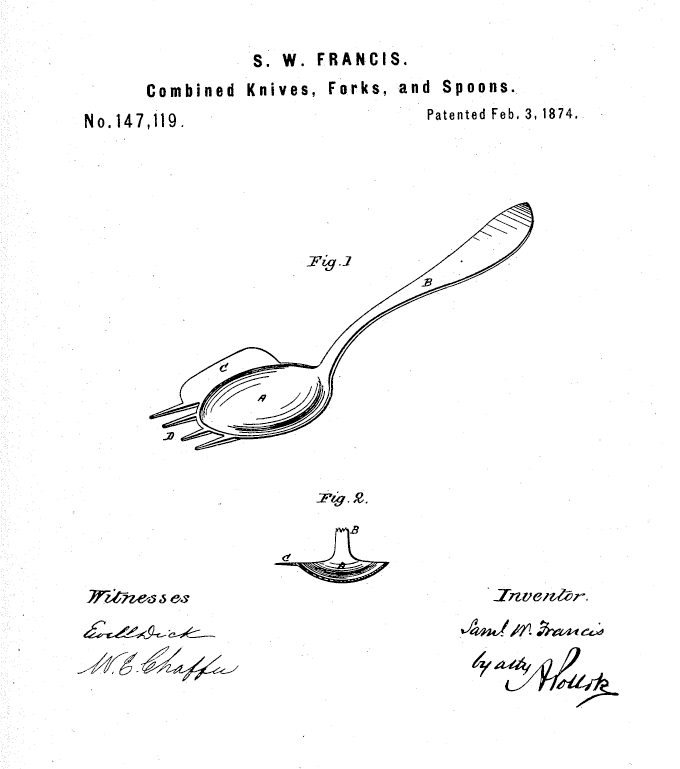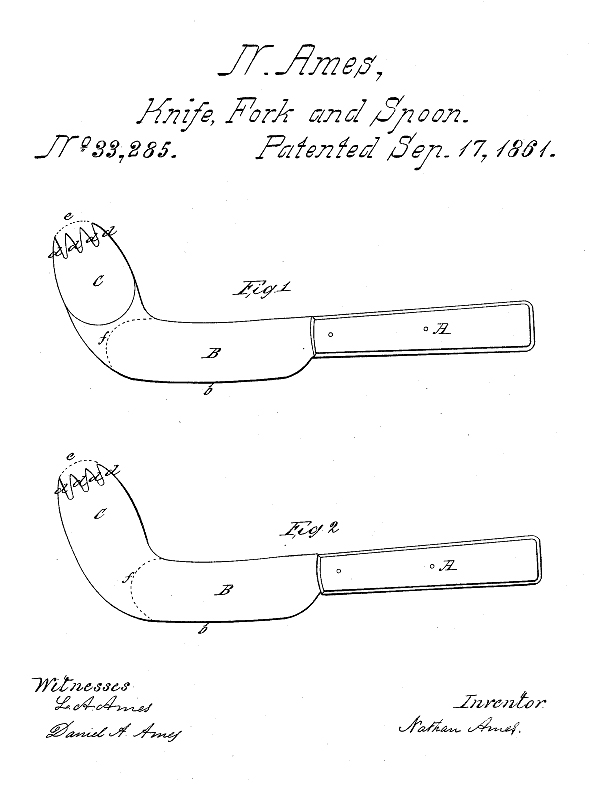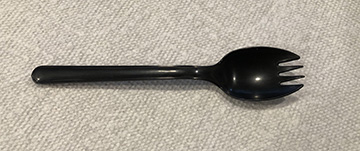
THE ULTIMATE American combination culinary tool is the spork – an eating utensil that merges the bowl of a spoon with the tine of a fork.
The word was coined in the early 20th century to describe such devices. Hyde W. Ballard* of Westtown, Pennsylvania, made it official in the 1950s. He applied for a trademark on his “eating utensil” the spork on April 7, 1951, Serial No. 609,277 and it was registered December 16, 1952. After Ballard’s trademark expired it was picked up by the Van Brode Milling Co.** in 1970.
Spork is a word that fuses the sounds and meaning of two words, a portmanteau.*** Different versions, plastic or metal, are used today by fast food restaurants, schools, prisons, the military, backpackers and campers.
Nearly all these reports credit the invention of the spork to Samuel W. Francis, 1835-1886, who was granted Patent No. 147,119, February 3, 1874, for what he called “combined knives, forks, and spoons.” And the Sam Francis story makes for a good but not entirely accurate yarn.
If you Google spork you will find a plethora of information ranging from a Wikipedia listing to New York Times and Salon articles, and dozens of other dispatches, some quite fanciful.****
Francis was a Civil War veteran, a physician who was part of New York’s elite social circles, the author of texts on dysentery and other serious medical concerns, and an extremely eccentric inventor. His patents over the years included a “writing machine” that is considered the prototype to today’s typewriter, a toothbrush with bristles of rubber, a cane with a hidden compartment, glass gloves for burn victims, and his cutlery combination.
But Francis did not invent what is now called the spork. The overlooked, but real inventor was Nathan Ames of Saugus Centre, Massachusetts. He was granted his “knife, fork and spoon” patent September 17, 1864, No. 33,285. In other words, Ames was on the books 10 years before Francis.
It should be noted that both patents had a “knife” aspect. Francis’ knife was on one side of the spoon, and Ames’ was on an extended blade before it ended in what he called his “forked-spoon.”
Ames, 1826 -1865, was, himself, quite an inventor. A patent attorney, he was granted a patent in 1859 for what is considered the prototype to the escalator. His “revolving stairs” had steps mounted on a continuous belt or chain. He also was awarded patents for a “polygraph,” not a lie detector but a device for writing two or more letters simultaneously, a machine for polishing leather and a nutmeg grater.
In the interest of culinary justice, based on Ames’ invention beating out Francis’ by 10 years, and his description of his combination fork and spoon as a “forked spoon,” it is now obvious that the cutlery device that exists today should not be called a “spork“ — but rather a “foon.”*****
—0—
*Hyde Whitcomb Ballard, 1909-1991, should be added to this mix of characters. He was a Pennsylvania patent attorney and an inventor, securing at least half a dozen patents over the years, including one for a ground station for aerial pickup systems (1945), and a sausage-stuffing machine (1958). He also was a car buff, serving as president of the Antique Automobile Club of America in 1942 and 1966.
**The Van Brode Milling Co., Clinton, Massachusetts, was founded in the 1940s and was best known for its breakfast cereals and later its plastic food–related products, including its “quality plastic banana boats and sundae dishes.” It applied for its “typed drawing” SPORK trademark October 24, 1967 and it was registered October 27, 1970. Apparently wanting to cover all its bases, it applied on December 29, 1971 for “typed drawing” trademarks for SPORKY and SPORTETTE and they were registered July 17, 1973. All three are no longer in effect and neither is Van Brode Milling. It was purchased in 1981 by U.K.-based Weetabix Cereal.
***Another portmanteau spork was a canned meat product produced for years, especially the 1940s and 50s, in Canada by Burns & Co. Limited. The spam-like product was described in ads as “the delicious blend of luscious pork shoulder and tender lean beef.” Burns also had another canned product named Speef.
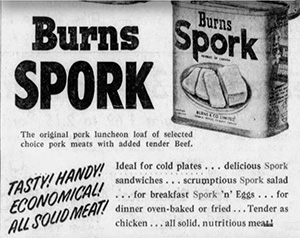
****Mara Altman, writing for the student-produced Columbia News Service in 2005, had this to say about the spork: “Turns out more than just humans were engaging in free love during the ‘60s; our table utensils were too. In the late ‘60s plastic sporks were born – the love child of a fork and a spoon.”
*****The trademark for foon is available at the U.S. Patent and Trademark Office, sort of. GSI Outdoors of Spokane Washington, filed for a trademark for KUNG FOON January 28, 2012 and it was registered March 19, 2013. The goods being covered were “household and kitchen utensils, namely chopsticks.” GSI boasts that “this unique ultra-clean camp utensil gives you the function of a spoon, fork and a set of chopsticks.”
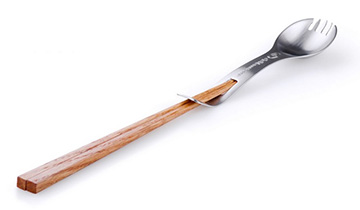
_______
Text (c) 2020, Donald Thornton. All rights reserved.

